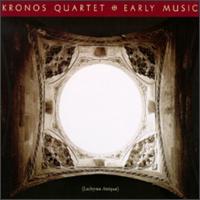 "Meisho Sugoroku was a board game from the Edo and Meiji periods in which one travelled to famous places. The board was a patchwork of pictures of these places arranged in a multi-directional manner around the board (usually in a spiral and facing outwards). As on the Sugoroku board, the city, writes Hidenobu Jinnai, 'is comprehended ... as a sequence of points each bearing some single strong impression' and this summarizes, he believes, 'the Japanese understanding of a city' ... It is a collection of memorable patches between which there is void and therefore, if one moves between these places, it is across time rather than topography."
"Meisho Sugoroku was a board game from the Edo and Meiji periods in which one travelled to famous places. The board was a patchwork of pictures of these places arranged in a multi-directional manner around the board (usually in a spiral and facing outwards). As on the Sugoroku board, the city, writes Hidenobu Jinnai, 'is comprehended ... as a sequence of points each bearing some single strong impression' and this summarizes, he believes, 'the Japanese understanding of a city' ... It is a collection of memorable patches between which there is void and therefore, if one moves between these places, it is across time rather than topography."-- 'Learning from the Japanese City' Barrie Shelton

"Jinnai makes a comparison of the idea the Japanese have of their city with a Japanese game for two or more players; Sugoroku, vaguely resembling the game of snakes and ladders. The element of play is an integral part of Japanese culture, as Isozaki explains: Rules are strictly obeyed, or with Japanese behavior can be likened to the playing of ta game where the rules of the game can not be usurped by rectitude, for it is in adherence to the rules alone that value can be assessed. The mastery of the game demands an alliance, an honouring of regulations that results in a precision of play that can only be seen as fervent devotion if not obsessive reflexivity. This Meisho Sugoroku was played at the time of the Edo period; players moved over the board from one famous place to another (meisho means fmaous place). This is how the layout of the city became apparent. Hidenobu considers the sum of these various places to be characteristic for Tokyo; one obtains a mental picture of the relationship when moving over the Sugoroku board of Tokyo."
-- 'The Socius of Architecture' Ad Graafland, Arie Graafland
"The characteristic pattern of Tokyo is sometimes compared to a Sugoroku board, Sugoroku being a game for a number of players that takes you from one famous place to another. I consider the discrete nature of the city to be characteristic of the urban experience of Tokyo. The city is divided into a heterogeneous field of different wards, each with its own character and with strongly inwardly-focused elements such as parks, gardens, and brothels. I use a term of Foucault's to describe the character of the spaces, i.e. their inward-looking nature, and the way in which they accumulate history. He calls this a heterotopia. This is the very quality I consider to be so characteristic of the squares on the Sugoroku board. They are small enclaves in the urban tissue, entities that store and present the Japanese culture. These heterotopias are contrasted with recent large-scale urban plans for the Bay, Ariake in Tokyo Bay and Minato Mirai in Yokohama. I consider both projects to be homotopias."
-- 'The Socius of Architecture' Ad Graafland, Arie Graafland

"If we consider the genre of Edo guidebooks, beginning with Asai Ryoi-s 'Chronicle of the Famous Places of Edo' of 1662 and concluding with Saito Gesshin's massive gazeteer 'Illustrations of the Famous Places of Edo' of 1834-36, we can detect a spatial conception that grasps the city as a homogeneous whole, corresponding to the kind of bird's-eye vantage point found in large screen paintings of the city of Edo. By contrast, the 'tales of prosperity' style that found its precedent in Gennai's depiction of Ryogoku in 'Rootless Grass' developed a method of composition by which was then constituted as a scene combining landscape and figures with the use of linear perspective. Using Andre Leroi-Gourhan's classification of space into two types, 'itinerant' and 'radial', the Edo guidebook genre would appear to be roughly equivalent to itinerant space, that movement along an itinerary. Asai Ryoi, in the preface of his Chronicle of the Famous Places of Edo', uses the phrase, "If one tours around Edo, with its countless places of note...", and Saito Gesshin in Illustrations of the Famous Places of Edo described the space of Edo as the 'ground' [chi, ji] on which the three generations of the Saito family -- Gesshin, his father, and his grandfather -- had inscribed the 'figure' [zugara] of their wanderings about the city. In this way, the image of the city was constituted by the complex traces connecting the countless points of the city's historical memory, in shrines and temples, in places made famous by poetic tradition, and in sites of history and legend. Gesshin thus conceived of the city of Edo as a dense distribution of such symbolic places as shrines, temples, and historical sites..."
-- 'Text and the City' Ai Maeda, James A. Fujii













No comments:
Post a Comment